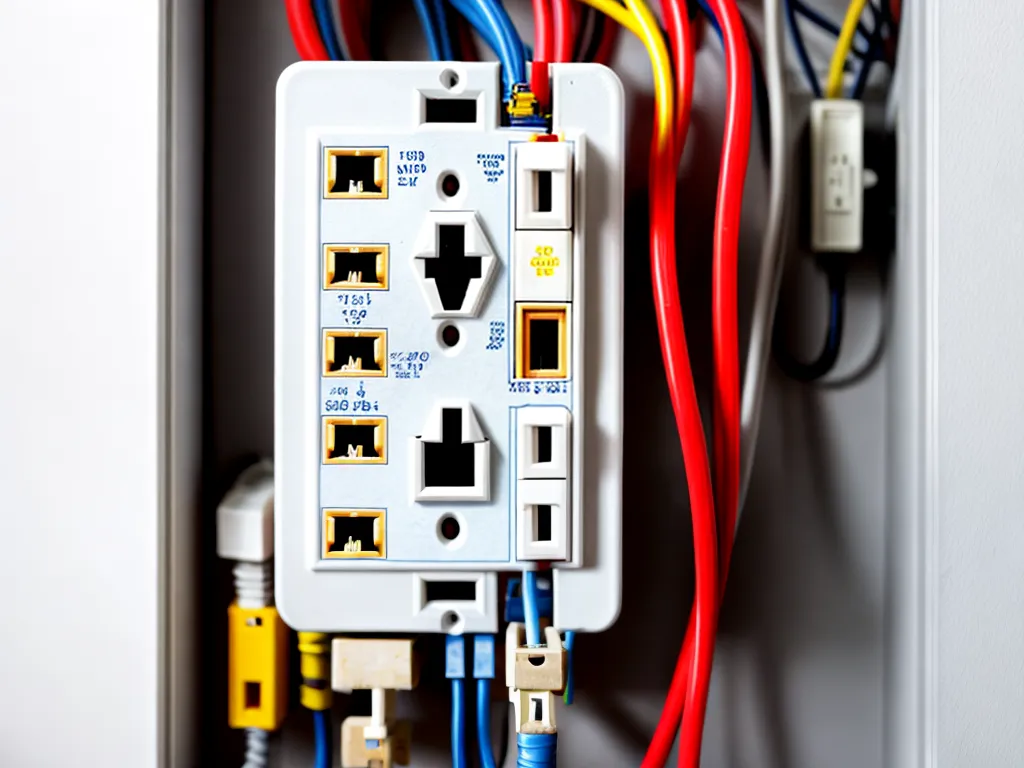
Introduction
Wiring a home can seem like an intimidating task, but with proper planning and safety precautions, even a beginner can successfully wire their home's electrical system. Proper wiring is essential for safety, functionality, and efficiency. In this comprehensive guide, I will walk through the entire process from start to finish.
Overview of Home Electrical Systems
Before diving into the steps for wiring a home, it's important to understand the basic components of a home's electrical system. This provides crucial context for the wiring process.
Main Electrical Service Panel
The electrical service panel, or breaker box, is the central hub that connects your home to the main power supply and distributes electricity throughout the house. This panel contains circuit breakers that shut off power to different circuits if they are overloaded.
Wiring Circuits
Wiring circuits distribute power from the main panel throughout the home. Lighting circuits supply electricity to lights, outlet circuits to wall outlets, and appliance circuits to major appliances. Different gauges of wiring are used for different circuits.
Switches and Receptacles
Switches control lighting and receptacles provide plug-in access to circuits. These are wired to the various branch circuits. Appropriate switches and receptacles must be used for their intended circuit.
Grounding System
A grounding system protects from electrocution and shock by providing a safe path for electricity to flow to the ground in the event of a fault. Grounding wires and connections are critical.
Working Safely
Safety should be your top priority when working with electrical wiring. Take the following precautions:
- Turn off power at the main panel - Shut off the main breaker and all circuits before wiring.
- Use personal protective equipment - Wear rubber-soled shoes, gloves, eye protection, etc.
- Work with a partner - Have someone available to help if an emergency occurs.
- Know your skill level - Only take on what you are comfortable handling.
- Follow all electrical codes - Adhere to the National Electrical Code and local regulations.
Tools and Materials Needed
You'll need a variety of tools and materials on hand before you begin:
- Basic hand tools - Screwdrivers, hammer, pliers, tape measure, level, etc.
- Voltage tester - To confirm power is off before working.
- Cable ripper - For pulling wires through walls and ceilings.
- Wire strippers - For stripping insulation from wiring.
- Electrical tape - For covering wire connections.
- Wire nuts - For joining wires together.
- Junction boxes - For housing wire connections.
- Conduit - For protecting wires in unfinished areas.
- And of course, the wires - Various gauges for circuits, grounding, etc.
Planning the Wiring Layout
Careful planning is crucial for success. Take time to plan where your circuits, switches, receptacles, appliance connections, and other components will be located. Consider:
- Appliance and lighting needs in each room
- The amperage rating required for each circuit
- Following established wiring codes for your region
- Future needs you may have down the road
Create a detailed wiring diagram you can follow during installation.
Installing the Main Service Panel
The service panel is the foundation of the entire system. Follow these steps to install it:
Selecting a Location
Pick an accessible location like the garage, laundry room, or basement. Follow any code restrictions.
Mounting the Panel
Securely mount the panel to studs in the wall using appropriate screws. The height should be convenient for access.
Connecting the Power Supply
Have your utility company connect the service entrance wires to the main breaker in the panel. Ensure proper grounding is in place.
With the panel installed, you can now begin running circuits.
Running Wire for Branch Circuits
Here is the process for running wiring for branch circuits:
Plan the Circuit Layout
Follow your wiring plan, ensuring wires are properly sized for the circuit amperage. Identify wire runs between the panel, switches, receptacles, appliances etc.
Select the Proper Wiring
Choose the gauge and type of wire according to code for each circuit. Nonmetallic sheathed wire is common. Read labels carefully.
Run Wires through Framing
Use a cable ripper to safely pull wires through holes drilled in studs, joists, and sill plates. Leave some slack at ends.
Make Secure Connections
Attach wires securely to devices, terminals, and junction boxes with cable clamps or appropriate connectors.
Leave Access Points
At any buried junctions, leave access panels for inspecting connections if needed. Properly label wires.
Installing Switches, Receptacles, and Fixtures
The final step is installing devices:
Switches
Connect wires to switch terminals properly based on the device. Secure switches in boxes with mounting screws.
Receptacles
Attach hot, neutral, and ground wires correctly. Follow grounding requirements carefully. Mount receptacles in boxes.
Lighting and Appliances
Connect fixtures and appliances to wiring following diagrams. Make robust connections and mount securely.
Testing and Turning on Power
Once everything is installed, take these final steps:
Visual Inspection
Thoroughly inspect all connections, orientations, fittings, and labels. Check for loose wires or improper connections.
Test with Multimeter
Verify safe voltage readings across circuits. Check that ground connections show continuity. Fix any issues.
Turn on Main Breaker
Energize the system by turning on the main breaker. Then test appliances and circuits for proper function.
Finish and Close Up
Install cover plates, insulate boxes, close up access points, and complete any last details.
Maintaining and Improving the System
Take these steps to keep your electrical system working safely for the long run:
- Test GFCIs and smoke alarms monthly.
- Check for hot outlets and faulty fixtures.
- Replace old outlets with GFCI outlets.
- Rewire old circuits with worn insulation.
- Add circuits to keep up with new appliances.
- Upgrade undersized wiring and panels.
Wiring a home electrical system is very rewarding when done properly and safely. Take your time, be cautious, get inspections, and turn to experts when needed. Enjoy the satisfaction and improved functionality.